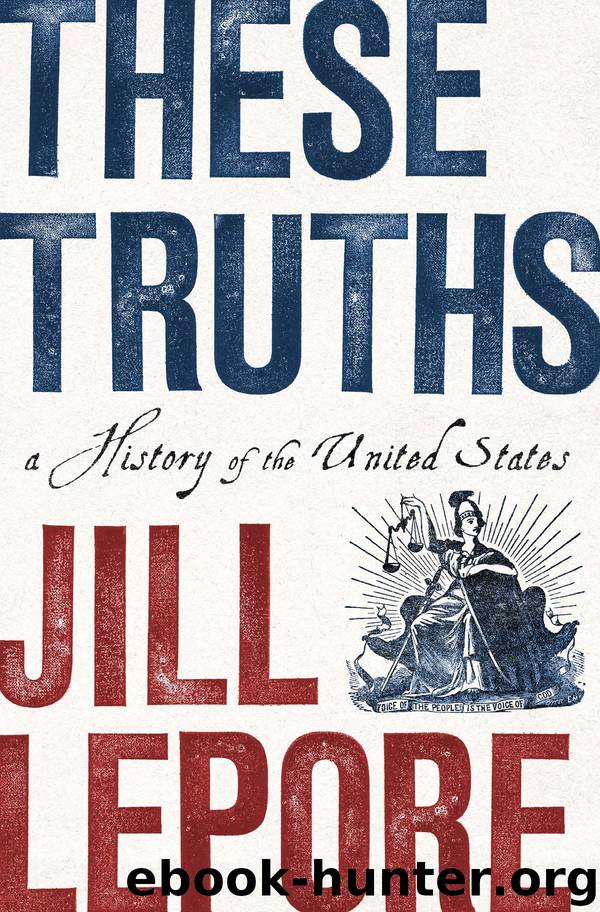These Truths: A History of the United States by Jill Lepore

Author:Jill Lepore
Language: eng
Format: epub
Tags: History, United States, General, State & Local, Modern
Publisher: W. W. Norton & Company
Published: 2018-09-17T22:00:00+00:00
III.
ROOSEVELT HAD GROWN haggard. At his inauguration in January 1945, he was wan and weak and could hardly stand; during his brief speech, his whole body shook, as if he had been seized by a fever. There would be no rest. He had agreed to undertake a harrowing journey, halfway around the world, in wartime, to a summit with Churchill and Stalin. Two days after the inauguration, he boarded a train for an undisclosed location, his car outfitted with bulletproof windows and armor-plated siding. Disembarking from the train at Newport News, Virginia, he boarded the USS Quincy, a battleship specially equipped with ramps for his wheelchair, for an eleven-day, 5,000-mile voyage to Malta. As the ship entered the harbor of the Mediterranean island, Roosevelt sat on deck wearing a tweed cap and a brown coat, smiling when a band on the Orion, the British ship carrying Winston Churchill, played “The Star-Spangled Banner.” Returning the favor, the band on board the Quincy played “God Save the King.” From Malta, Roosevelt and Churchill were flown separately, each escorted by six fighter jets, on a seven-hour flight to Crimea, on the Black Sea, to meet with Joseph Stalin at a lavish villa, Livadia Palace, the summer retreat of the last czar, in the seaside resort town of Yalta.100
Roosevelt and Churchill had gone to Stalin, and not he to them. It had been a terribly dangerous and long journey for the two friends, neither of whom was well, but especially for Roosevelt, who was dying. At the time the conference opened, Stalin enjoyed more support in the American press than he ever had before or ever would after. He appeared on the cover of Time in a story celebrating the American ally’s recent victories, “as Joseph Stalin’s armies thundered into the eastern Reich.” A month later, Time’s cover story, “Ghosts on the Roof,” commentary in the form of a strange fable written by senior writer Whittaker Chambers, fiercely denounced Stalin for devising an entirely new politics—international social revolution—by which he could “blow up countries from within.”101 It would later be suggested that Roosevelt, his powers diminished, had appeased Stalin at Yalta, with fateful consequences. As Stalin’s ruthlessness later became altogether plain, it became clear, too, that the agreement reached at Yalta hadn’t stopped Stalin from taking over Eastern Europe and it may have made possible the communist takeover of China. Later, too, there would follow intimations of intrigue and even of treason, after it was revealed that Alger Hiss, an American delegate to the conference, was a Soviet spy. But Soviet archives, opened after the end of the Cold War, would reveal that he reported to the military, not to the political branch, and that his reports from Yalta had little or no effect on the proceedings. And by many measures, Roosevelt got from Stalin the most that it may have been possible for an American president to get.102
Download
This site does not store any files on its server. We only index and link to content provided by other sites. Please contact the content providers to delete copyright contents if any and email us, we'll remove relevant links or contents immediately.
The Vikings: Conquering England, France, and Ireland by Wernick Robert(79867)
Ali Pasha, Lion of Ioannina by Eugenia Russell & Eugenia Russell(40134)
The Conquerors (The Winning of America Series Book 3) by Eckert Allan W(37104)
The Vikings: Discoverers of a New World by Wernick Robert(36907)
Cecilia; Or, Memoirs of an Heiress — Volume 1 by Fanny Burney(32412)
Cecilia; Or, Memoirs of an Heiress — Volume 3 by Fanny Burney(31821)
Cecilia; Or, Memoirs of an Heiress — Volume 2 by Fanny Burney(31799)
Empire of the Sikhs by Patwant Singh(22960)
The Secret History by Donna Tartt(18804)
Hans Sturm: A Soldier's Odyssey on the Eastern Front by Gordon Williamson(18454)
Cat's cradle by Kurt Vonnegut(15150)
Pimp by Iceberg Slim(14316)
Sapiens: A Brief History of Humankind by Yuval Noah Harari(14210)
Talking to Strangers by Malcolm Gladwell(13184)
Norse Mythology by Gaiman Neil(13168)
Leonardo da Vinci by Walter Isaacson(13146)
4 3 2 1: A Novel by Paul Auster(12262)
Underground: A Human History of the Worlds Beneath Our Feet by Will Hunt(11997)
The Radium Girls by Kate Moore(11898)
